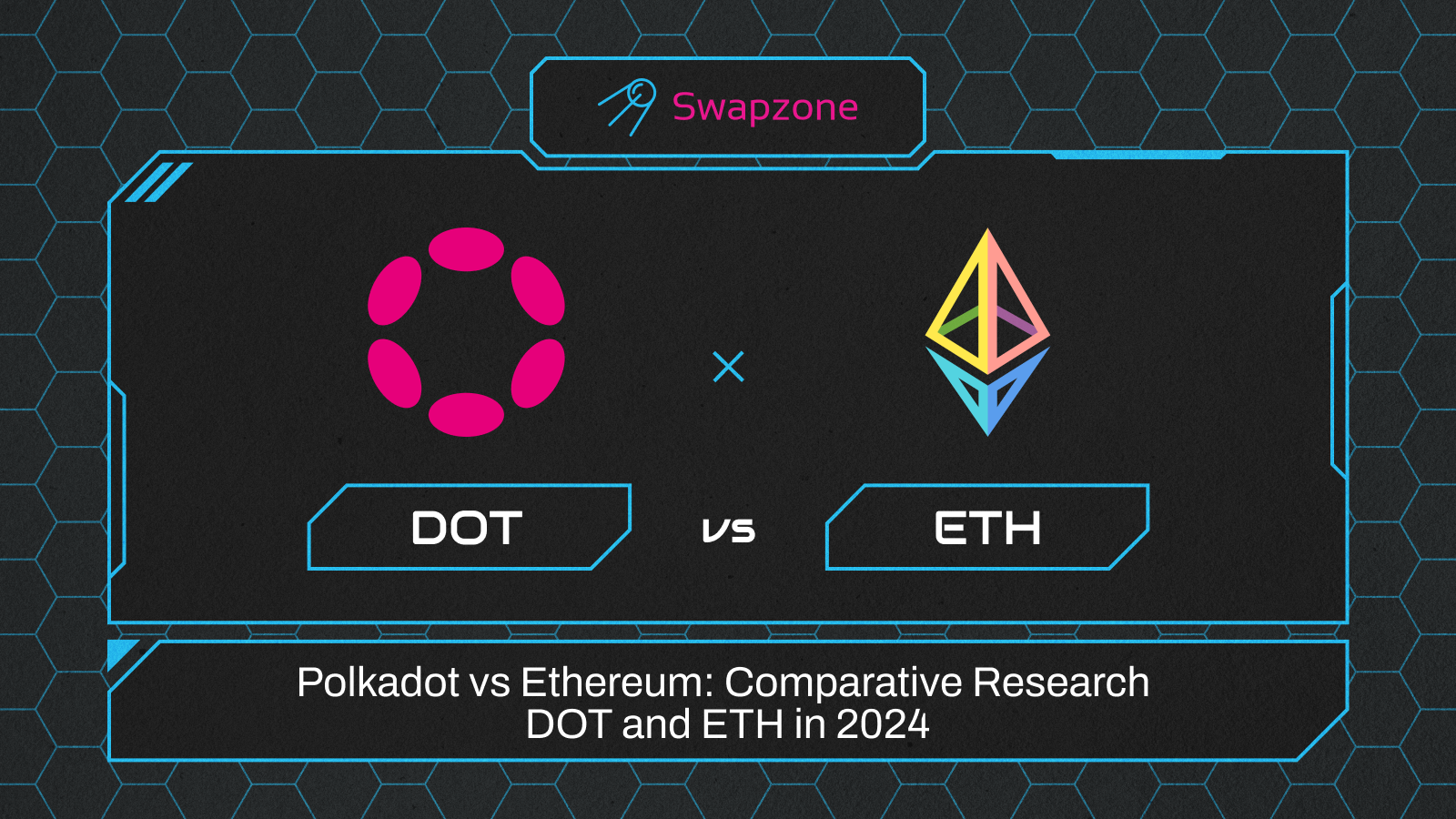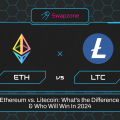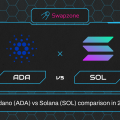Ethereum and Polkadot stand as leading blockchain platforms, each with distinct features and goals. Ethereum, renowned for pioneering smart contracts and decentralized applications, is evolving towards Ethereum 2.0’s proof-of-stake mechanism. Conversely, Polkadot emphasizes scalability and interoperability, using parachains for cross-chain communication.
While Ethereum boasts an established infrastructure, Polkadot‘s innovative architecture offers promising solutions to blockchain’s scalability challenges. In this article, we will compare different blockchains, and delve deeper into their respective strengths and weaknesses.
Ethereum Virtual Machine
The Ethereum Virtual Machine (EVM) serves as the backbone to support smart contracts within the Ethereum network. It operates as a decentralized runtime environment, enabling the execution of code on the blockchain.
At its core, the EVM is a Turing-complete virtual machine, meaning it can execute any arbitrary algorithm. This flexibility allows developers to create a wide array of decentralized applications (DApps) and smart contracts, ranging from simple token transfers to complex decentralized finance (DeFi) protocols.
The EVM operates within the broader Ethereum ecosystem, which includes the Ethereum 2.0 upgrade. Ethereum 2.0 introduces Proof-of-Stake consensus, enhancing scalability and energy efficiency.
Dawn of the smart contract era
The dawn of the smart contract era marked a significant shift in the way transactions are conducted on the blockchain. Ethereum smart contracts allow for automated and decentralized agreements to be executed without intermediaries.
Vitalik Buterin and Gavin Wood developed Solidity as a programming language specifically for smart contracts, enabling developers to create complex decentralized finance (DeFi) applications. This innovation has revolutionized the financial industry, offering increased security, transparency, and efficiency in transactions while opening up new possibilities for automation and trustless interactions.
Ethereum 2.0 and Move to Proof-of-Stake
Ethereum 2.0, is a version of Ethereum that marks a monumental shift from proof-of-work to Proof-of-Stake consensus mechanism. Validators replace miners, securing the network by staking their ether and earning rewards for honest participation. This move enhances scalability and energy efficiency. Ethereum 2.0 introduces sharding, which breaks the blockchain into smaller segments to process transactions in parallel.
ETH token explained
ETH, the native cryptocurrency of Ethereum. It is used to pay gas fees for transactions on the network and provides the execution of smart contracts.
ETH plays a vital role in decentralized finance (DeFi) applications. ETH acts as a utility token for various functions. With the transition to Ethereum 2.0, ETH users can participate in staking and earn rewards.
Pros and Cons of Ethereum
Ethereum stands out for its innovative smart contract capabilities, which have propelled the rise of decentralized finance (DeFi) and non-fungible tokens (NFTs). With a vibrant developer community and a commitment to regular upgrades, Ethereum continues to evolve. However, it’s worth mentioning the cons.
Ethereum pros
- Smart Contract Pioneer.
- Robust Developer Community.
- Regular Upgrades.
- User-Friendly Solidity.
Ethereum cons
- Scalability Challenges.
- High gas fees.
- Network Congestion.
- Interoperability Issues.
- Security Risks.
- Growing Competition.
Understanding Polkadot
Polkadot was founded by Gavin Wood, co-founder of Ethereum. Polkadot is an innovative blockchain platform revolutionizing the Web3. With interconnected blockchains, scalability, DOT Polkadot facilitates seamless cross-chain communication.
Relay chain
The relay chain acts as the central nervous system of Polkadot, overseeing critical functionalities like parachain auctions, governance, and transaction validation. It serves as the gateway for projects to secure parachain slots through auctions.
Transaction validation on Polkadot is carried out using the innovative Nominated Proof-of-Stake (NPoS) consensus mechanism, where token holders nominate validators to secure the network and validate transactions efficiently.
Parachains & Parathreads
Parachains, or parallel chains, and parathreads are integral components of Polkadot’s innovative multi-chain ecosystem. Parachains are designed to operate independently, each capable of running its own consensus algorithms.
Parachains feature a limited number of parachain slots obtained through parachain auctions, granting direct access to the relay chain for seamless communication within Polkadot. In contrast, parathreads offer flexibility and cost-effectiveness, accessing the relay chain dynamically without dedicated slots.
Shared Security
Polkadot’s shared security model makes sure that all connected parachains enjoy a robust level of protection. This is facilitated through the Nominated Proof-of-Stake (NPoS) consensus mechanism. Validators, responsible for securing the network, are assigned to specific parachains.
Each validator team oversees the security of its assigned parachain, ensuring its integrity and reliability. This pooled security approach means that the security of each parachain benefits from the combined efforts of all validators across the Polkadot network.
DOT Token Explained
The DOT token is an utility token within the Polkadot ecosystem. It enables holders to engage in governance voting for protocol upgrades. Also, it facilitates parachain bonding during auctions, staking for network security, and rewards, incentivizing active participation.
Parachain Bonding
Parachain bonding in Polkadot involves projects locking up DOT tokens to secure a parachain slot and join the network. This process guarantees participation in the ecosystem and facilitates cross-chain communication through the Cross-Consensus Message Passing Format (XCM).
Furthermore, projects may choose public crowdloans, seeking DOT contributions from the community to secure their parachain slot. Bonding DOT tokens grants access to Polkadot’s security and interoperability, fostering seamless interaction within the blockchain ecosystem.
Polkadot Governance
Polkadot’s governance model is built on the participation of DOT token holders. Using their tokens, holders engage in on-chain voting to influence decisions within the ecosystem. This includes selecting validators for each parachain, thus securing the network.
Moreover, DOT holders can make proposals and vote on network protocol changes or upgrades. That fosters adaptation and evolution over time. Governance is transparent and decentralized, with community-driven decisions implemented by validators.
DOT Staking Rewards
In Polkadot, DOT staking involves two main roles: validators and nominators. Validators are responsible for validating transactions and securing the network. Nominators support validators by staking their DOT tokens.
Validators and nominators both receive rewards for their contributions to network security, typically ranging from 10% to 12% annually, depending on conditions. Validators earn rewards directly, while nominators receive a portion through their nominated validators.
Some exchanges also offer staking services, including DOT staking. By staking DOT, users can receive rewards without the need for running their own validator nodes.
Pros and Cons of Polkadot
Polkadot offers numerous advantages. However, there are also some cons worth noting.
Polkadot pros
Polkadot offers numerous advantages:
- Sharding, or sharded architecture, provides scalability by enabling parallel processing of transactions across multiple chains.
- The Nominated Proof-of-Stake consensus mechanism provides efficient and secure transaction validation.
- Fast finality provides quick confirmation of transactions.
- Cross-chain communication through the Cross-Consensus Message Passing Format (XCM) fosters interoperability between parachains.
- Polkadot’s shared security model provides robust protection for all connected chains.
- Active governance by DOT holders allows for decentralized decision-making and protocol upgrades.
- Staking DOT tokens earns rewards, incentivizing participation in network security.
- The Substrate framework makes development more accessible and efficient for developers.
- Lastly, Polkadot boasts a vibrant ecosystem, with growing adoption and diverse projects contributing to its development and utility.
These combined features position Polkadot as a leading platform for scalable, interoperable, and secure blockchain solutions.
Polkadot cons
Polkadot proved itself as a vibrant ecosystem. However, there are still some cons to highlight:
- Slow Decision-Making: Polkadot’s governance model may lead to sluggish decision-making processes.
- Security Risks: Potential security vulnerabilities could arise from the validator selection process.
- Sharding Issues: There might be challenges or inefficiencies with Polkadot’s sharding technology.
- Parachain Risks: Each parachain’s security could be compromised due to the shared security model.
- Parachain Limit: The finite number of parachain slots may restrict scalability and innovation.
Ethereum vs. Polkadot: Key Differences
Two fundamental concepts often discussed: forkable versus forkless upgrades. As well as the contrasting consensus mechanisms – Proof-of-Stake (PoS) and Proof-of-Work (PoW). These differences play a crucial role in shaping the functionalities and efficiencies of platforms like Ethereum and Polkadot. Let’s dive into these distinctions.
Forkable vs. Forkless
Ethereum’s upgrade process often involves risky forks or splits, which can lead to network fragmentation. In contrast, Polkadot adopts a forkless approach through its Wasm meta-protocol and on-chain governance. That provides smoother upgrades without disruptive forks.
Polkadot can easily update and improve its protocol by using on-chain governance without the need for contentious hard forks. Because of that, the ecosystem evolves efficiently without creating unnecessary divisions. The forkless model employed by Polkadot highlights its commitment to continuous innovation and sustainable growth within a unified network framework.
Proof-of-Stake vs. Proof-of-Work
Proof-of-Stake (PoS) and Proof-of-Work (PoW) are consensus mechanisms used in blockchain networks. PoW, as employed by Ethereum, initially, requires miners to solve complex mathematical puzzles to validate transactions. This causes a high level of energy consumption. Unlike PoW, PoS, adopted by Ethereum 2.0 and Polkadot, chooses validators to produce blocks according to their staked cryptocurrency amount, enhancing energy efficiency.
Single-Chain vs. Multi-Chain
Ethereum operates on a single-chain architecture, limiting scalability as all transactions occur on one chain. In contrast, Polkadot uses a multi-chain approach, employing parallel chains known as parachains. Furthermore, Polkadot’s multi-chain model facilitates cross-chain communication and interoperability. It provides seamless interaction between different parachains.
Polkadot vs. Ethereum: Similarities
In comparing Polkadot and Ethereum, it becomes clear that despite their differences, they share several similarities. These parallels provide understanding their respective roles.
Mining Process
Ethereum initially employed a Proof-of-Work (PoW) mining process, where miners competed to solve complex mathematical puzzles to validate transactions. However, to address scalability and energy consumption concerns, Ethereum transitioned to a Proof-of-Stake (PoS) model with Ethereum 2.0.
On the contrary, Polkadot employs Nominated Proof-of-Stake (NPoS), allowing token holders to nominate validators for network security and rewards. While validators are vital for both networks, selection and reward distribution methods vary.
While Ethereum shifted to PoS to reduce energy consumption, Polkadot’s NPoS aims to achieve consensus and security. It promotes token-holder participation and rewards through staking.
Less Energy
Both Polkadot and Ethereum have embraced Proof-of-Stake (PoS) consensus mechanisms, prioritizing energy efficiency and sustainability. Unlike the energy-intensive Proof-of-Work (PoW) mining approach, PoS requires minimal computational resources, significantly reducing energy consumption. This shared focus on energy efficiency aligns with broader sustainability goals within the blockchain space.
Staking
Staking is a process embraced by both Ethereum and Polkadot. Holders of ETH tokens and DOT tokens can contribute to network security and governance. Participants lock up their tokens as collateral, which enables network security and validates transactions.
Stakers get rewards for their contributions, usually with additional tokens, fostering a robust network. Increased staked tokens bolster decentralization, security, and efficiency in both Ethereum and Polkadot ecosystems.
Comparison of Market Capitalization: Ethereum vs Polkadot
As of 2024, Ethereum maintains a dominant position in the cryptocurrency market, boasting a significantly higher market capitalization compared to Polkadot. In contrast, while Polkadot has shown remarkable growth potential since its origin, its market capitalization remains notably lower than Ethereum.
However, despite Ethereum’s current lead, Polkadot’s expanding use cases suggest the potential for significant appreciation among users. DOT is an intriguing asset for investors seeking exposure.
Future Projections for Both Platforms
As for future developments, Ethereum 2.0 is anticipated to enhance scalability, energy efficiency, and developer experiences, addressing current limitations. This upgrade will enable faster transaction speeds and reduce energy consumption, cementing Ethereum’s position as a leading platform for smart contracts.
In contrast, Polkadot focuses on enhancing blockchain interoperability and cross-chain communication, creating a more interconnected ecosystem. With its innovative multi-chain architecture and vibrant community, Polkadot emerges as a leading blockchain player.
Conclusion
Polkadot and Ethereum present distinct features and challenges, shaping the future of blockchain. Polkadot’s interoperability and scalability contrast Ethereum’s established smart contract capabilities.
The choice between them depends on users’ and developers’ requirements. Recognize their strengths and navigate the changing blockchain landscape effectively.
Frequently Asked Questions
The differences are that Polkadot stands out for its emphasis on blockchain interoperability. And Ethereum is renowned for its decentralized applications powered by its own virtual machines.
Currently, Polkadot has a higher transaction speed than Ethereum. So it processes more transactions per second. Although upcoming upgrades to Ethereum may impact this comparison.
Yes, developers can use smart contracts on both Polkadot and Ethereum. They benefit from a developer environment for creating decentralized applications.
Certainly! Another significant difference is the implementation of distinct consensus mechanisms. Polkadot applies proof-of-stake, and Ethereum 2.0 adopts beacon chain PoS. Additionally, Polkadot’s pooled security model enhances security for multiple blockchains.
The decision between Polkadot and Ethereum depends on individual investment goals. It’s crucial to conduct thorough research, consider risks, and stay informed when investing in cryptocurrencies.


